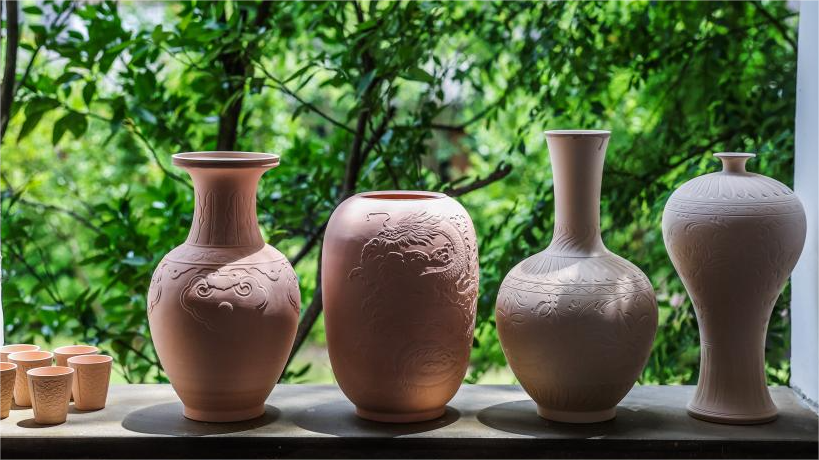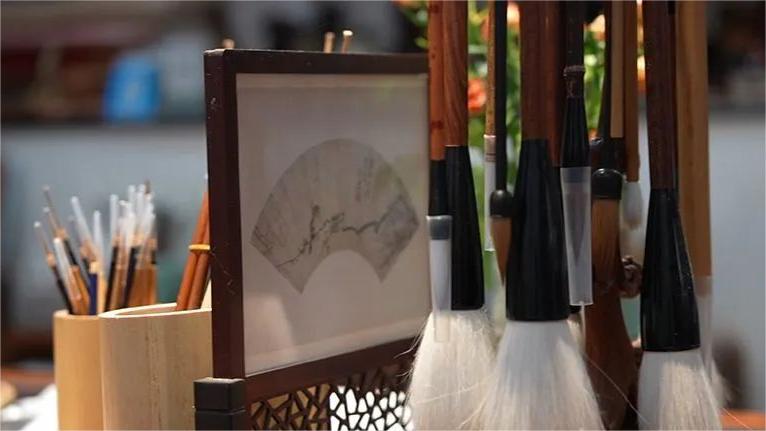Stitching heritage art into modern innovation
BEIJING, June 8 (Xinhua) -- In May, Axin and his mother embarked on a journey spanning nearly 9,000 kilometers from their home in Guizhou Province, the hinterland of southwest China, to London. With them, they took a selection of intricate and captivating embroidery works, a heritage art of the Miao ethnic people.
The craftsmanship of Miao embroidery shown by the mother-son duo, donned in the traditional dress of the Miao, enthralled visitors at the 10th London Craft Week.
Axin, a designer who infuses Miao elements into his fashion line, and his mother, a master embroiderer with five decades of needlework dedication, embody a broader narrative: an age-old craft from China's remote mountains gaining modern appeal, even international acclaim, with innovative minds.
The Miao ethnic people have long expressed their rich cultural heritage through needle and thread, turning garments into "books on the body." This form of art was recognized in 2006 with its inclusion on China's inaugural national list of intangible cultural heritage.
For years, Guizhou, home to a significant Miao population, has prioritized preserving this heritage art by promoting it as an industry.
Through efforts ranging from support for entrepreneurship and training and management of embroiderers to formulating product standards and copyright protection rules, authorities at all levels encouraged skilled artisans to turn their expertise into livelihoods. Among them is Yang Wenli from Xinren Miao Township, Bijie City.
"For us Miao girls, knowing how to embroider is a basic life skill passed down through generations," said the young woman in her late twenties, reminiscing about her childhood clothes, handcrafted by her mother and adorned with exquisite embroidery.
Embracing this tradition, Yang returned to her home village in 2017 after years working in coastal cities. With the backing of the local government, she then established a workshop that produces embroidered Miao attire, and introduced embroidery machines to villagers to enhance efficiency.
When Yang sought to expand her business in 2021, she established a team to create original designs to meet the demands of a diverse market, offering everything from custom handmade pieces to machine-produced souvenirs like cushions, shirts, and bags. She also utilized live-streaming to explore China's burgeoning online market.
What began as a single second-hand embroidery machine in Yang's home has now flourished into a 1,600-square-meter workshop employing over 20 local embroiderers. In 2023 alone, sales of its embroidered products exceeded 2.2 million yuan (about 310,000 U.S. dollars).
In Guizhou, there are around 300 enterprises engaged in Miao embroidery-related businesses like Yang's company.
"I hope one day our Miao embroidery will be in the spotlight of Paris Fashion Week," Yang said, an ambition shared by Axin and other young enthusiasts dedicated to injecting fresh vitality into the ancient cultural heritage. Axin has already showcased his line of garments featuring Miao embroidery on runways abroad, including in Italy and Russia.
Their dream may not be far off, as Guizhou has worked to amplify the popularity and influence of Miao embroidery through the digital preservation and promotion of this heritage art form.
A database providing domestic and global designers access to this rich cultural resource has been established, which contains vector graphics of around 20,000 Miao embroidery motifs, with over 12,000 registered for copyright.
"Through copyright registration, we create an 'identity card' for each traditional Miao embroidery pattern, making it a purchasable and tradable virtual product," explained Han Xiaoyang from Colorful Guizhou Cultural Industry Investment Group Co., Ltd., the state-owned enterprise responsible for the project.
These efforts have unleashed vast commercial potential. The company has partnered with international fashion brands, integrating 1,500 Miao embroidery patterns into over 150 products sold in 15 countries, including the United States, the United Kingdom, Japan, and Brazil.
"By enhancing the commercial appeal of Miao embroidery and bridging the gap between international fashion and traditional craftsmanship, we are elevating Miao embroidery to the global stage, infusing this ancient craft with a new brilliance for the modern era," said Peng Yang, head of the Miao embroidery industry in Guizhou.
Photos
Related Stories
Copyright © 2024 People's Daily Online. All Rights Reserved.









